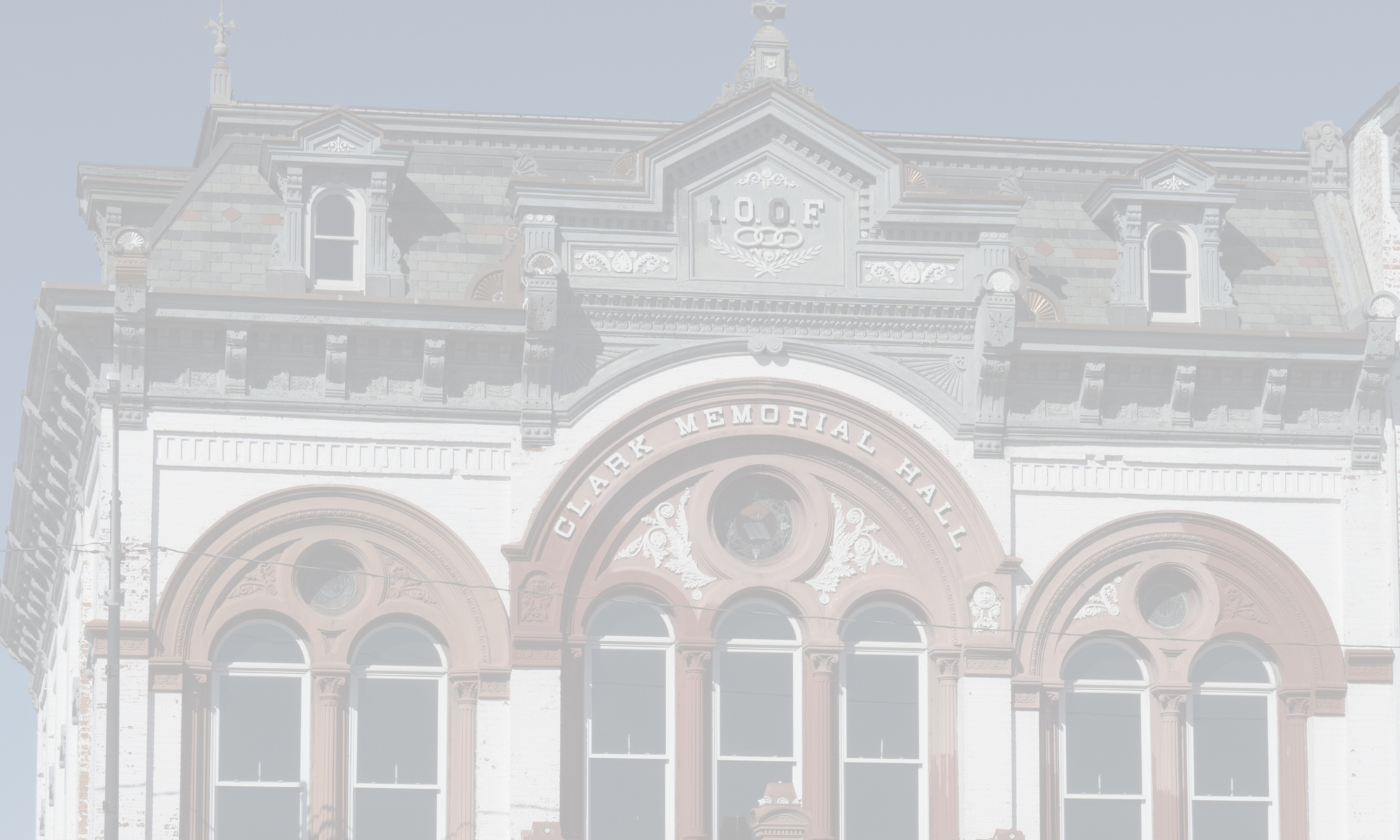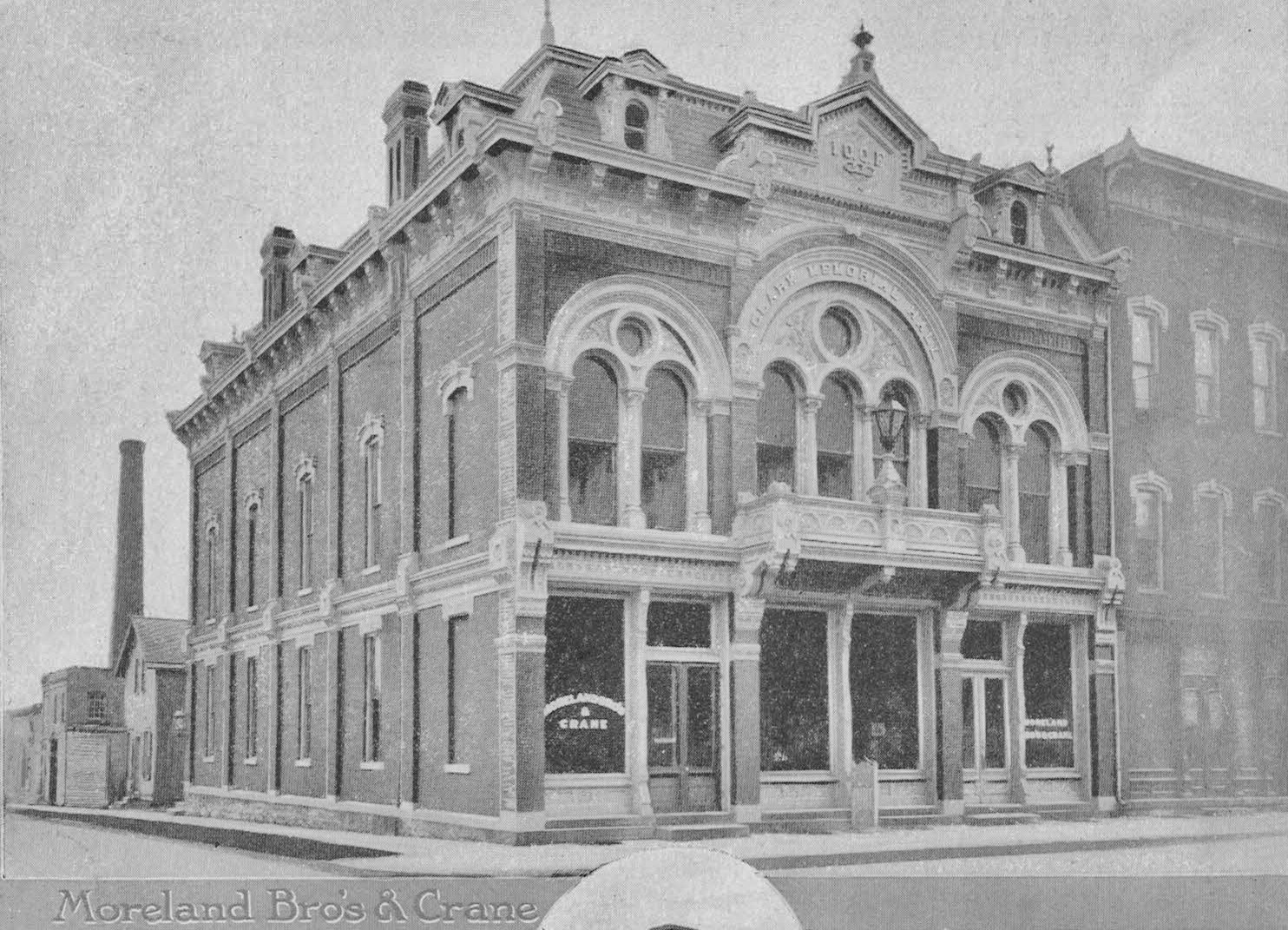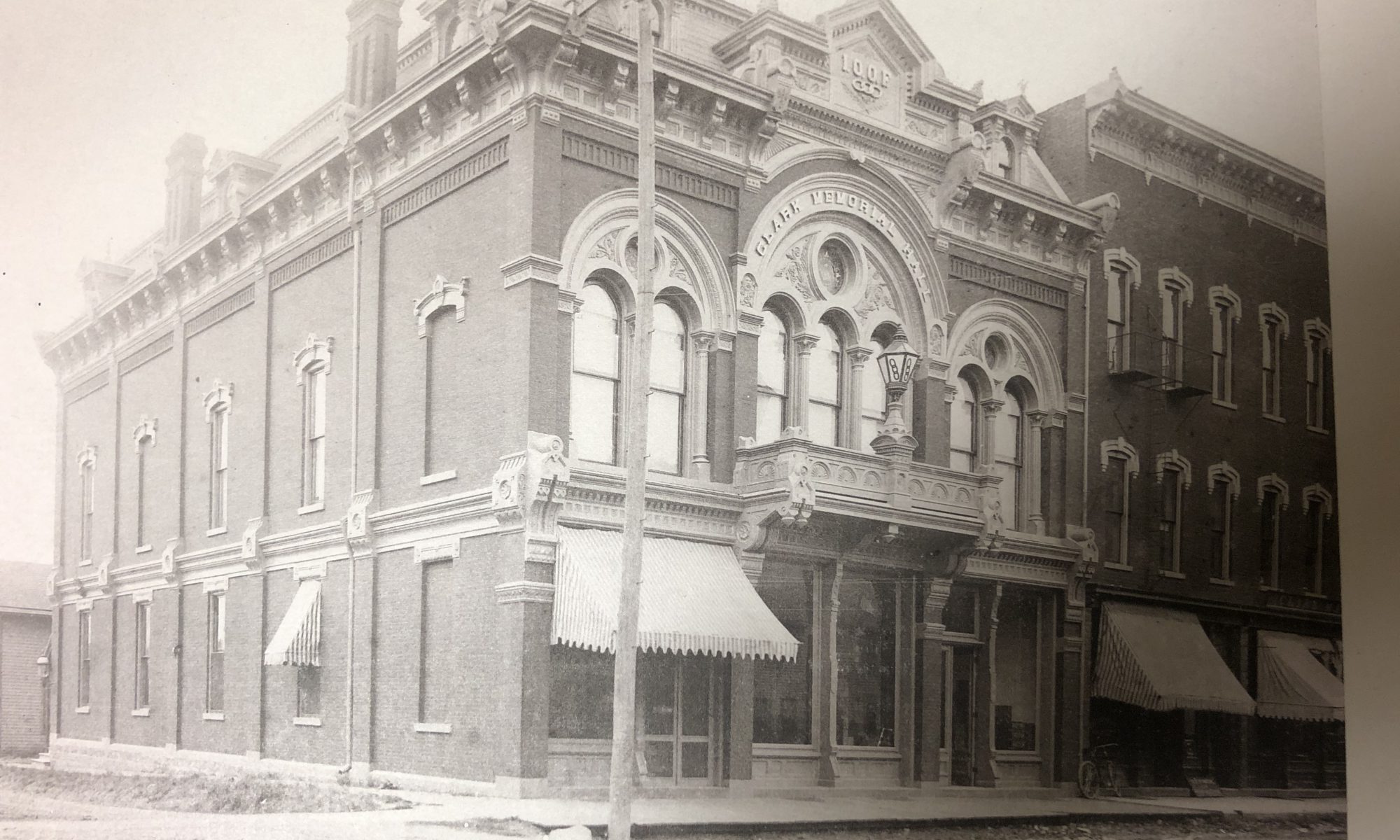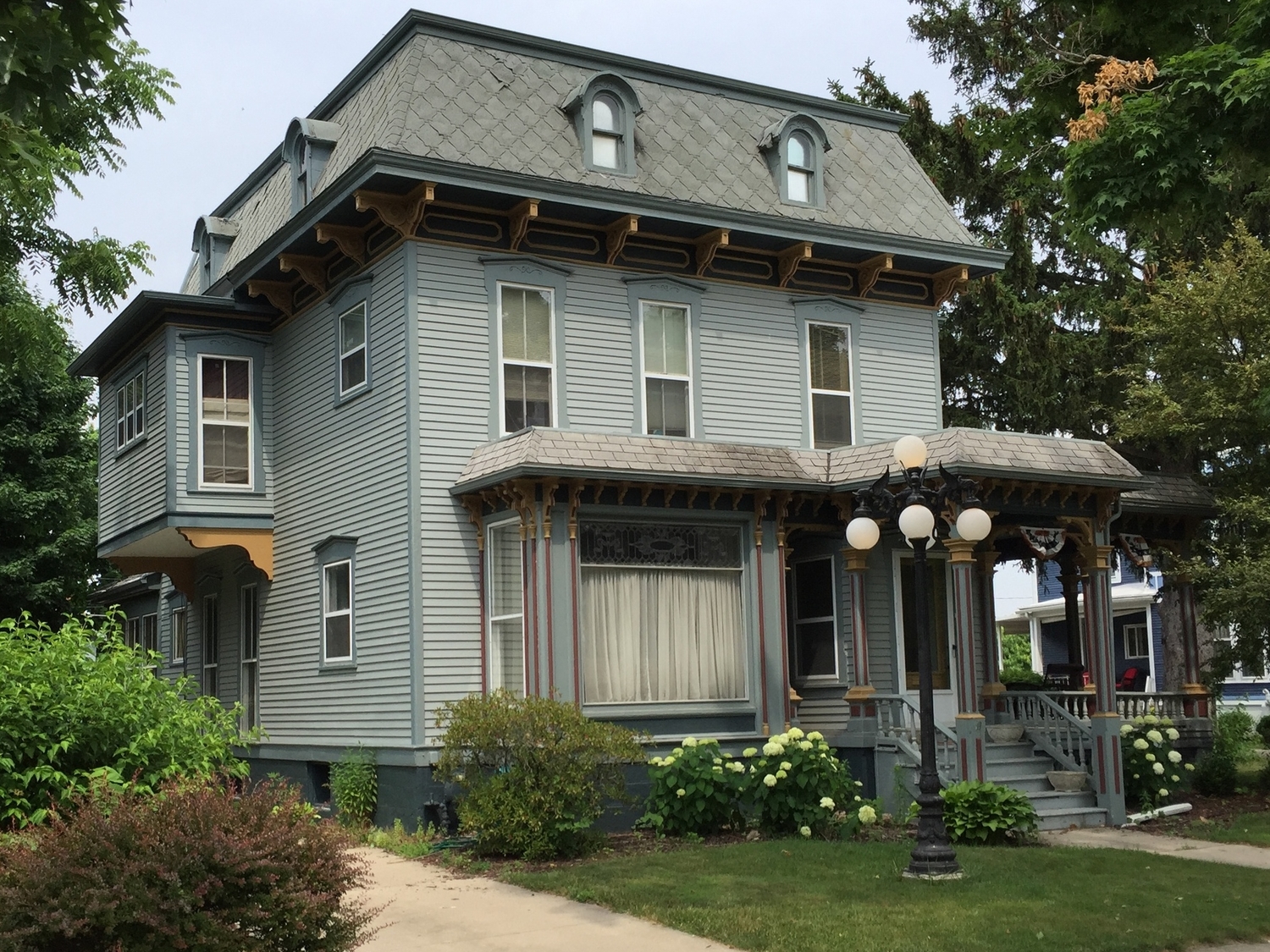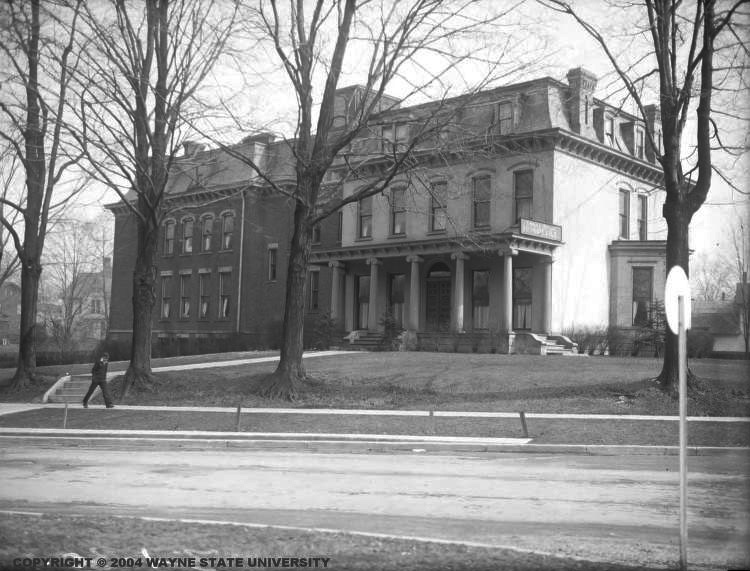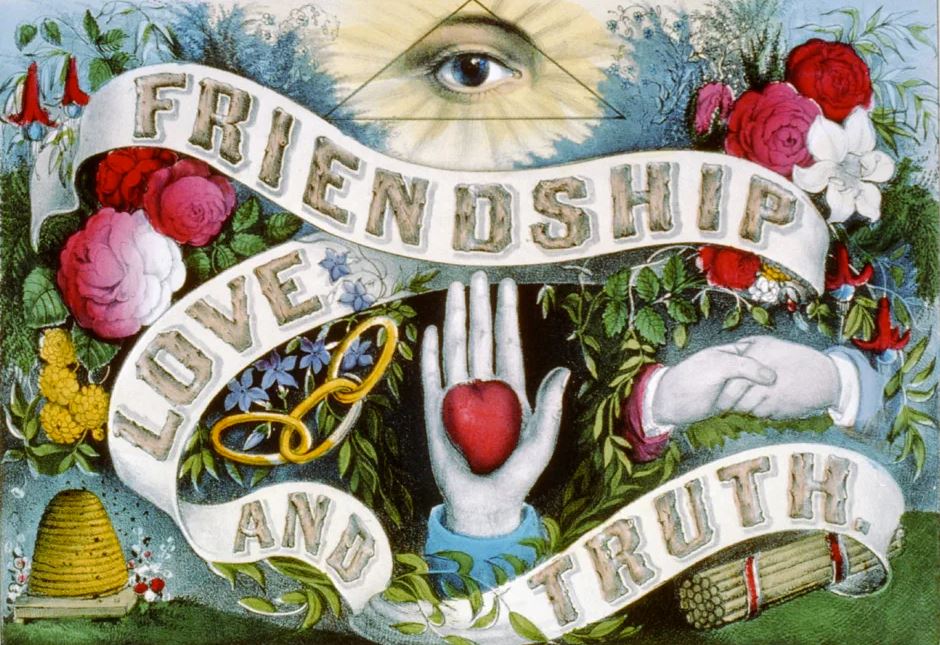This photograph from ca. 1915 depicts World War I troops lined up on South Winter Street. Clark Memorial Hall is visible at the far left.
Moreland Bros. & Crane
In this image, from 1907, the etched front windows bearing the “Moreland Bros. & Crane” logo is visible. Notice how 2 of the windows on the south side of the building have already been bricked in. We believe this was due to the extravagant fixtures installed in the Moreland Bros. Office right inside the front window. Unfortunately the antique oak fixtures at some point were removed from the building.
Clark Memorial Hall is Completed
By late 1888, the structure neared completion.
The entire first story was leased to Moreland Brothers and Crane, a tobacco and candy company. The interior fixtures of the store were installed by the Theime Mantel Company, and described in the local paper as follows:
“The outfit, which is to be located on the south side of the building, will be made of finely carved antique oak. The front office will be next to the window and the back of it will be covered with antique oak and plate glass trimmings that will reach to the ceiling….The furniture will undoubtable surpass anything in this part of the state”
On January 7, 1889 the IOOF held the first meeting in their new hall.
Construction Starts
8 Years after Clark’s death, the Oddfellows had the land and capital sufficient to erect a meeting hall. During a meeting on April 30, 1888, the building committee was authorized to let contract to the lowest bidder for the hall’s construction. Beck and Vogt, a local firm, won the contract with a bid of $9,000. Stone was delivered to the site on June 1, 1888, and by August 11 the Adrian Daily Times and Expositor reported that the structure had “…the handsomest front in town.”
Clark’s Death
Upon Clark’s death in 1880, he willed $10,000 to the Adrian IOOF Lodge #8 with instruction that at least half of it would be used to construct a new meeting hall.
Clark’s daughter, Isabella Clark Cocker, honored his memory by remodeling her own home at 312 Dennis Street in the Second Empire style – the same as her father’s home.
The IOOF would eventually follow suit, drawing up plans for a second empire style meeting hall to be built in his honor.
Bank President
When the Lenawee County Savings Bank was organized in December, 1869, Elihu was elected president of the institution and served in that capacity for many years until he finally resigned due to health concerns.
Elihu L. Clark’s Wealth
Elihu L. Clark became a very wealthy man. His estate was estimated to be worth $750,000 by 1880 – which in today’s equivalent is $21 Million.
He was said to be the wealthiest man in Lenawee county, and possibly all of southern Michigan. His wealth was nearly all generated from business conducted in and around Adrian.
Clark lived in a grand Second Empire-style home that he built in the late 1860s for a cost of $5,500 ($204,000 current day equivalent) at the corner of Maumee and Locust streets, where the Adrian Post Office now stands.
He donated much of his personal fortune to the welfare of his community. He donated $10,000 toward a project to find a location for the Detroit and Butler Railroad to pass through Adrian,
Just before his death, Clark donated $5,000 to the new Adrian State Industrial Home for Girls, created by the Michigan Legislature in 1879.
State Legislature
Elihu is elected to the State Legislature in 1848, and serves one term.
Elihu L. Clark Becomes a Banker
Through the late 1830s and 1840s, business was good. Elihu invested extra money in State scrip which he bought at a discount and generated large investment profits for himself when he later sold. In 1847, he sold his dry goods business to his brother, John R. Clark. From 1847 onward, Elihu L. Clark was in the business of lending money. He became an important financier of considerable fortune, supplying capital to local farmers and businesses.
Adrian I.O.O.F. Established
Through a dispensation granted by Grand Master A.S. Kellog on March 6, 1845, a new Independent Order of Odd Fellows lodge was organized in Adrian–Adrian Lodge Number Eight. Monday night was designated as meeting night. During the first meeting of the Adrian Lodge, nine prominent Adrian citizens were intitiated into the Odd Fellows; among these was Elihu L. Clark.
